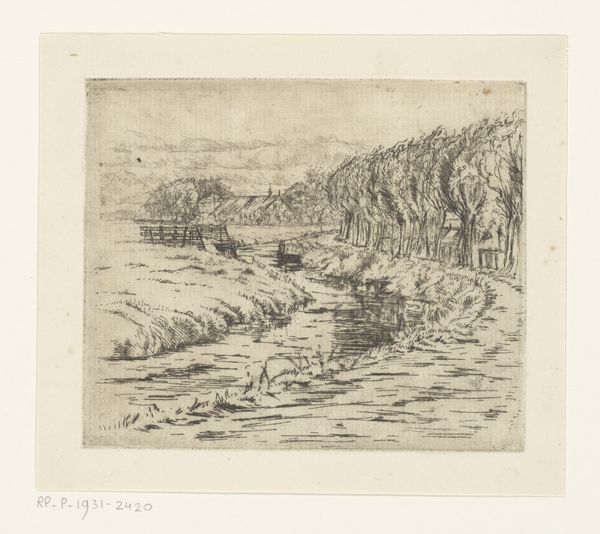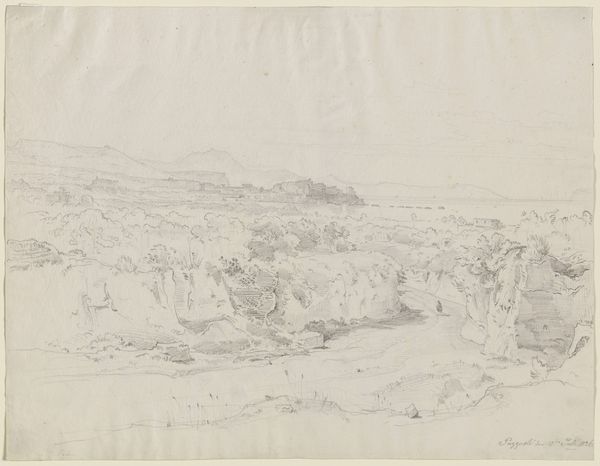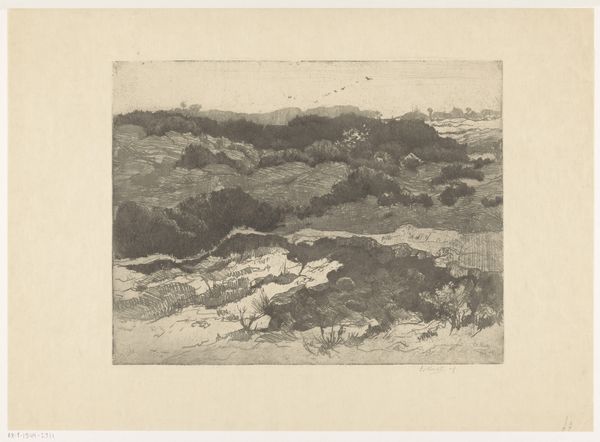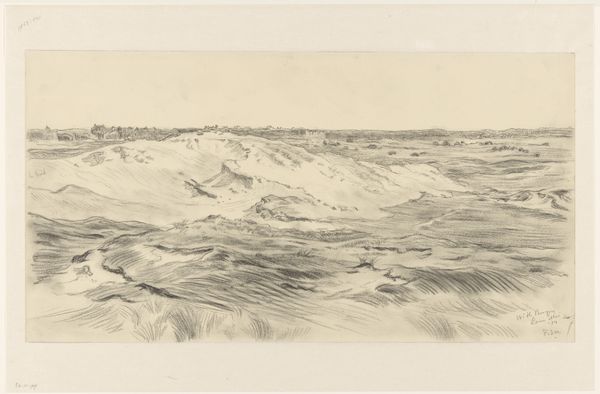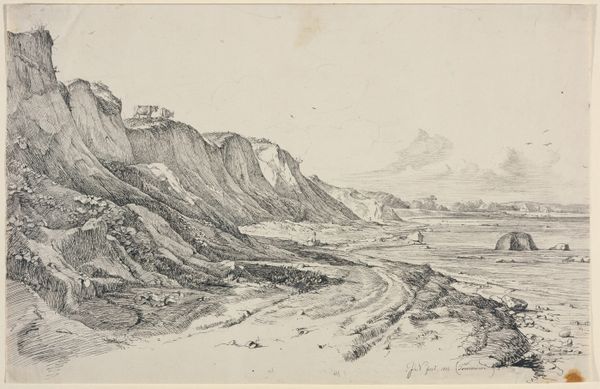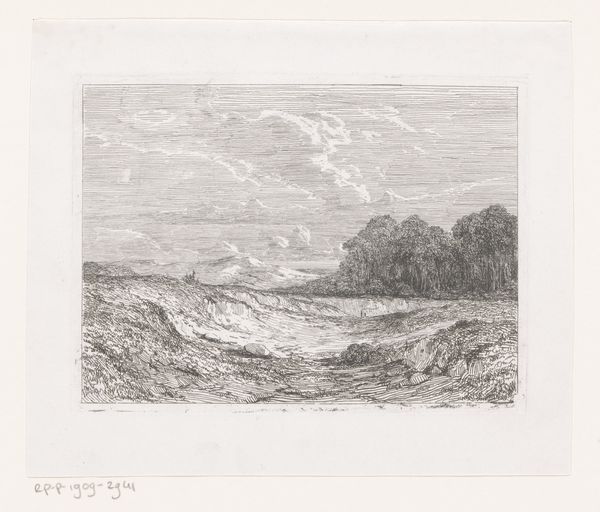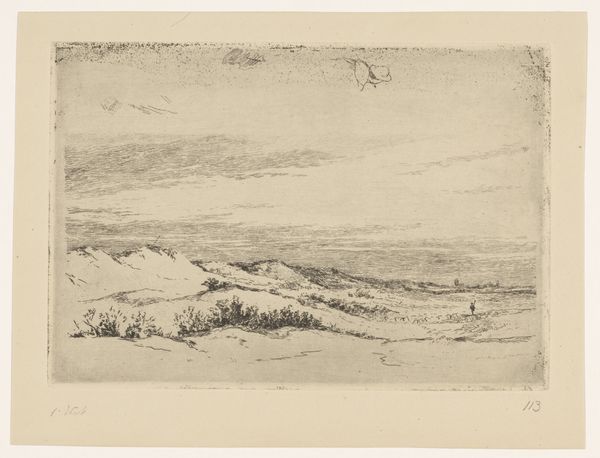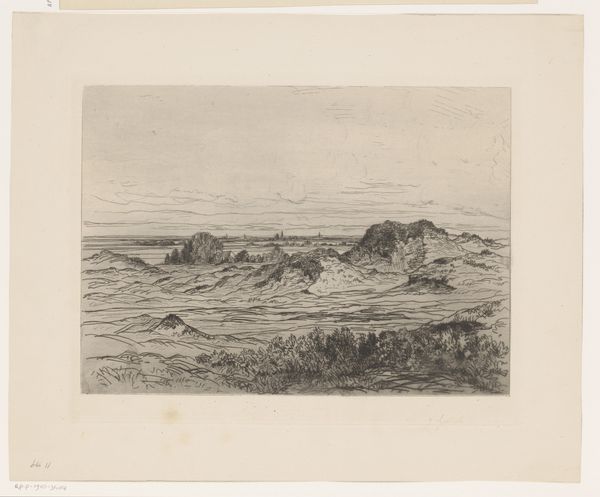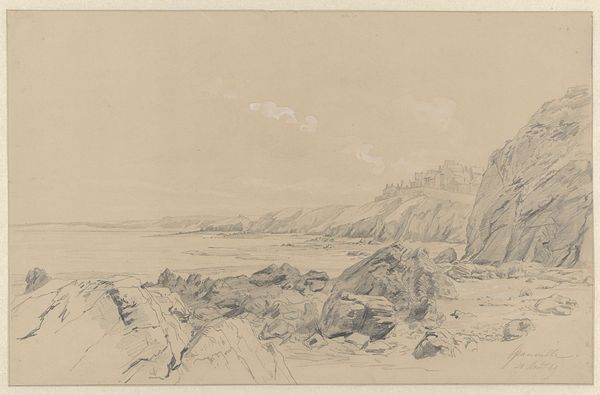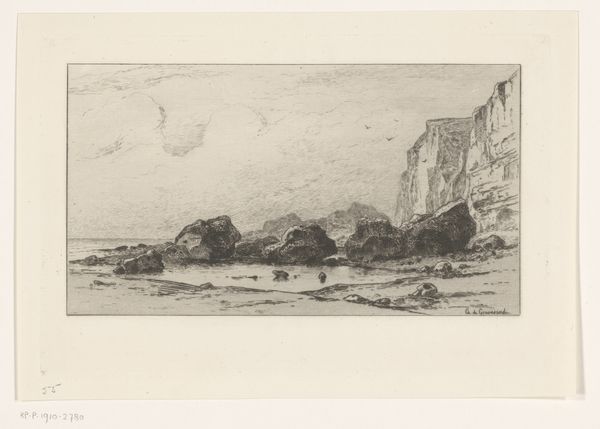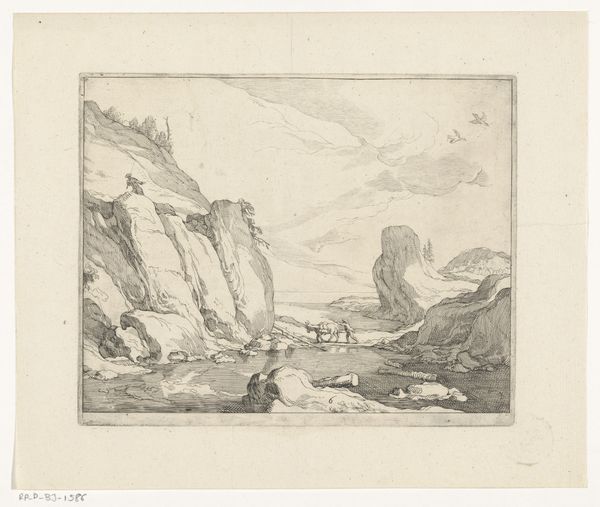
drawing, print, etching
#
drawing
# print
#
etching
#
landscape
#
line
#
realism
Dimensions: height 139 mm, width 198 mm
Copyright: Rijks Museum: Open Domain
Curator: Here we have Maurits van der Valk's "Duinlandschap," a Dutch landscape piece created between 1867 and 1922 and held at the Rijksmuseum. It's an etching, a print made with incised lines. Editor: It makes me think of a silent film. All this light and shadow. It's like walking into a memory. A stark and beautiful memory. The scale makes you feel you could get lost in the dunes Curator: Indeed. The interplay of light is critical, particularly regarding how we understand shifting social constructions of land, labour, and the sublime within national identities of the time. Van der Valk seems interested in illustrating a raw space. It's tempting to situate his focus in discourses about nature's use in the late 19th and early 20th centuries. Editor: I suppose so. Personally, I feel a deeper connection. It is more like remembering the feeling of cool sand. The way dunes rise up around you and swallow you. How that feels is more powerful to me than any historic reading. Curator: Your experience brings up important notions of embodied spectatorship. These direct encounters prompt a re-evaluation. Instead of simply reading landscapes, one can feel oneself occupying it. How do identity and social awareness change the encounter of nature? This work might provide insights. Editor: Ha! Well, my social awareness is telling me I need a very long, cold drink after wandering around that much sand. I think Van der Valk wanted you to feel small, exposed, yet comforted, all at once. Curator: Ultimately, Van der Valk allows us to see a space imbued with a period’s identity anxieties, yet marked with something powerfully, ecologically persistent. Editor: Yes, anxieties and… sand. Definitely sand. I wonder if I can find it at the gift shop as a postcard.
Comments
No comments
Be the first to comment and join the conversation on the ultimate creative platform.
